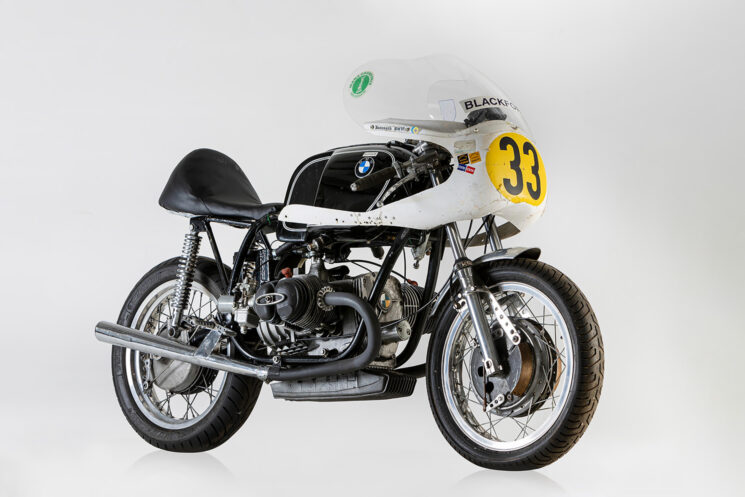
The Bonhams February sale is about to wrap up, so we’re taking a break from our regular scheduled programming to pick our favorite motorcycles from the auction. From an Ariel Square Four and a 1989 Kawasaki ZX-10, to Hans-Otto Butenuth’s BMW 500 Rennsport [above], here are seven classic motorcycles that we’d love to park in the Bike EXIF garage.
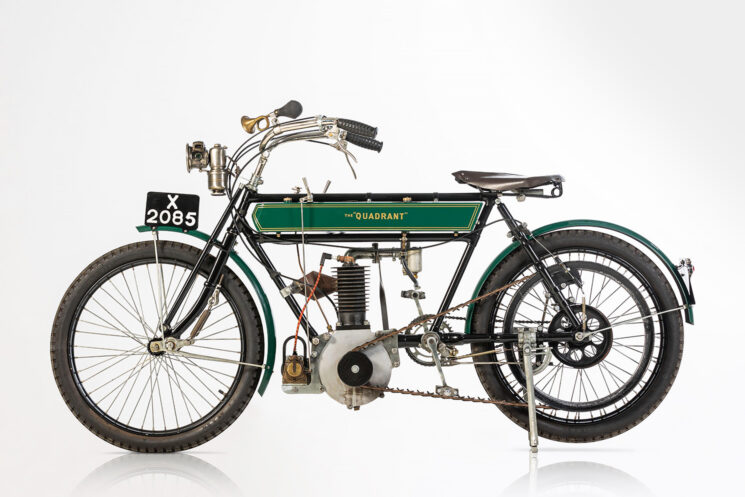
1907 Quadrant In the early 1880s, two blokes by the names of Walter and William Lloyd patented a pedal tricycle steering mechanism, which they (very confusingly) called the ‘Quadrant.’ Anyway, Quadrant went on to make bicycles, tricycles, and motorcycles, and, by 1901, had emerged as one of Britain’s earliest motorcycle manufacturers.
This 453 cc Quadrant was originally built in Coventry and was meticulously restored by a previous owner. It showcases its history through hand-written notes, technical drawings, old registrations, marque-related literature, and an SMCC Pioneer Certificate.
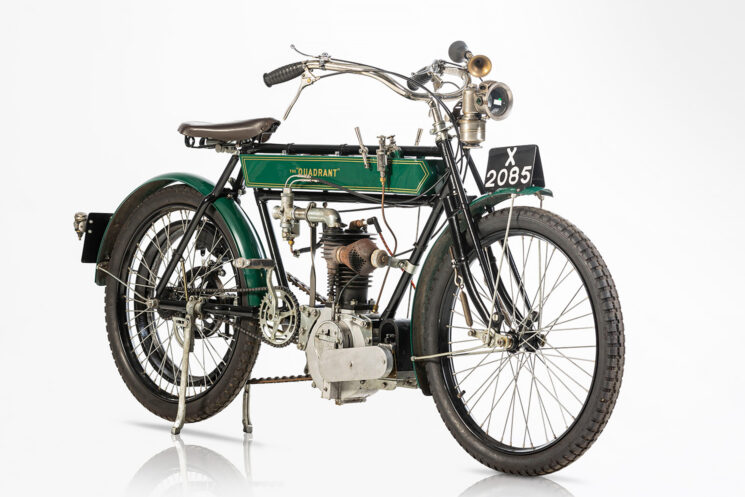
The notes detail an engine swap, with the current engine outlined as not original, but period correct. This is backed up by copious notes and with the original engine cases (serial numbered 3432) included in the spare parts list.
The previous owner fitted a centrifugal clutch and a later-model carburetor, with Bonhams describing the modifications as “practical for riding.” Which we guess is true, if you’re used to riding an extremely heavy, but pretty, bicycle. [More]
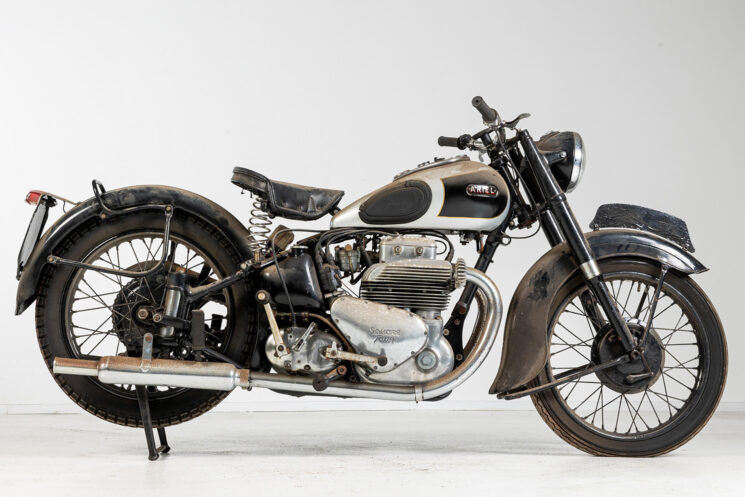
1950 Ariel Square Four 4G Mark I Of all the incredible motorcycles that were built in the 40s and 50s, the Ariel Square Four ranks high on our list. Designed by British motorcycle engineer Edward Turner, it was named for its engine, which consisted of two parallel twin mills sandwiched together, with the four pistons arranged in a square layout. Turner originally pitched the idea to BSA—but BSA knocked him back, so he took the drawings to Ariel, and the rest is history.

Built at Ariel’s base in Birmingham, England, production of the Square Four started in 1931 with the 4F. Early 4F models had an initial displacement of 500 cc, a chain-driven overhead camshaft, and a four-speed Burman gearbox operated by a hand shift. Later 4F models grew to 601 cc for those who wanted to haul a sidecar.
The next model in the Square Four’s evolution was the 4G. The engine in the 4G had been completely redesigned to combat issues with the rear cylinders getting too hot. The changes saw its displacement upped to 995 cc, and it now sported overhead valves.
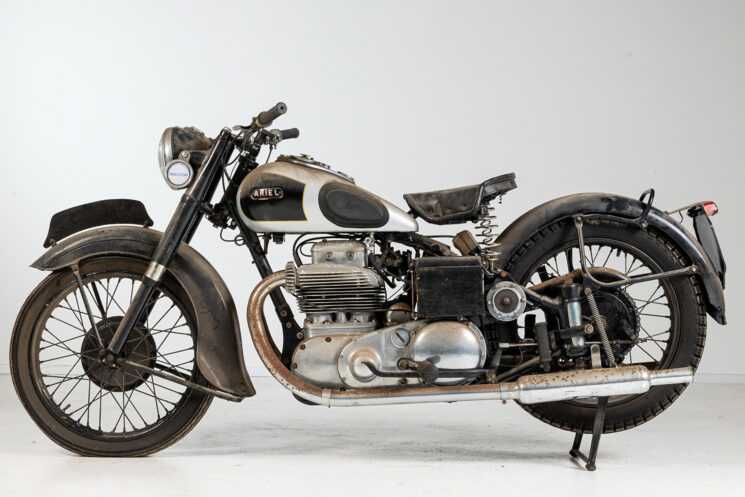
Next up was the Mark I, which is the bike you see here. Production started in 1949, with a large emphasis on weight saving. The old cast iron cylinder heads were replaced with alloy components, the girder forks were upgraded to telescopic units, and the plunger rear suspension was now a standard item.
This bike in particular was built in 1950 and has been in dry storage for the last 20 years. Little is known about its previous life, so we can’t say for sure whether it was restored some time ago. We do love the patina, and we bet discerning buyers will be willing to pay a premium for all that lovely dust. [More]

Ex-Hans-Otto Butenuth BMW RS 500 Something about purpose-built racing machines always catches our eye, and this machine is no exception. It also has quite the story to go with it.
This is a late-50s BMW 500 Rennsport owned by the late, great Hans-Otto Butenuth. Nicknamed ‘The Little One,’ Hans-Otto raced this very bike while he was both a works rider and privateer for over 40 years. Catching the racing bug on a BMW R51, Hans rode everything from NSUs and Nortons to Japanese bikes on circuits and the Isle of Man TT. But Hans loved BMW’s motorcycles and couldn’t stay away from them.
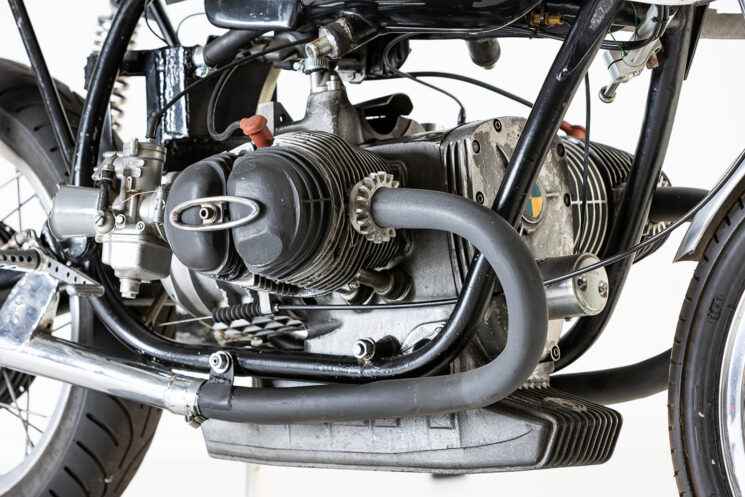
Hans-Otto campaigned three different BMW Rennsport machines in his life, but this one is quite special. Not only did he buy this bike brand new from the BMW factory, but this is the very bike he used to win the 1971 German 500 cc Championship. Incredibly, the bike was 15 years old at the time.
Hans-Otto had three racing boxers in his stable and he went on to achieve a long list of successes on all of them in mainland Europe and beyond. Interestingly, he still holds the 500 cc lap record at the old Avus circuit in Berlin; a record he holds in perpetuity.
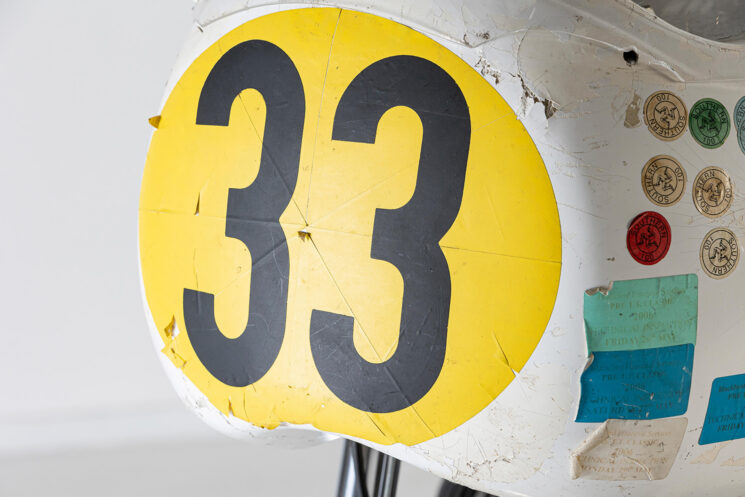
Upon Hans-Otto’s passing in 1997, the RS 500 was given to his friend Larry Devlin. As a fellow motorcycle racer and a staunch believer in using race bikes for their intended purpose, Larry campaigned the RS 500 up until 2011—only retiring because his new knee joints wouldn’t flex enough to continue racing.
Larry himself passed in 2021 and the RS 500 has been in storage since. The bike is being sold by the Devlin family and we hope to see the RS 500 back where it belongs—the race track. (Or in our garage.) [More]
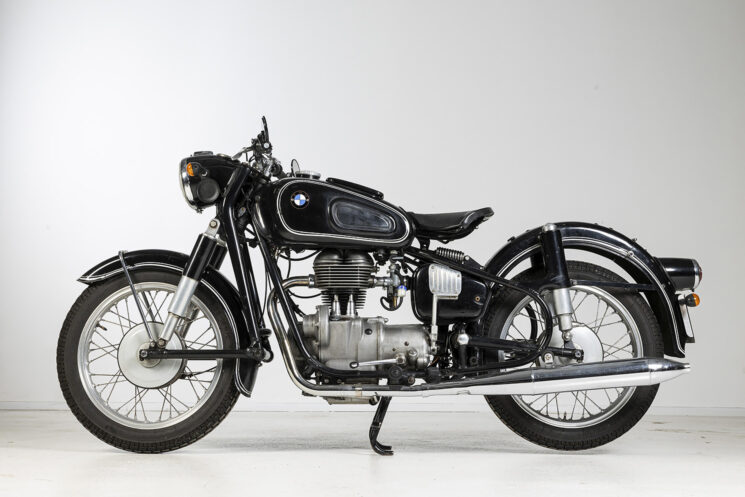
1961 BMW R27 We love the early BMW boxers—from the angular R42 and R52 up to the curvaceous R69. But this gorgeous machine proves that a vintage BMW looks just as good with half an engine. This is a 1961 BMW R27, and what it lacks in cylinders, it makes up for in beauty.
The first single-cylinder bike BMW released after WWII was the 247 cc R24, which was a more basic version of the R27. Being the final model of the Bavarian thumper, the R27 was upgraded from previous models over time. Through the years it gained plunger rear suspension, Earles-type leading link front forks, and a rubber-mounted engine.

This particular R27 was delivered new to US importers Butler & Smith Inc. of New York in 1961 and was bought by a lady named Anita Caveluzzi. From the 80s until 2008, the machine was owned in the State of Maine by the late Richard C. Paine Jr, a well-known motorcycle collector. The R27 was then bought at a previous Bonhams auction in September 2008 and sent to the UK, where it was registered for road use in 2013.
It was after it arrived in England that it was subsequently restored, as evidenced by the large wad of invoices included with the bike’s documentation. [More]

1974 John Player Norton Commando This right here was Norton-Villiers’ ingenious way of wrangling their old parallel twin into modernity (or trying to, at least). Launched back in 1967, the Commando was an instant hit—landing the coveted ‘Machine of the Year’ award five years in a row. It was down on power compared to flashy rivals from BSA, Triumph, and Honda, but who needs speed when you’ve got useable mid-range torque and steady handling?
As a nod to Norton’s racing sponsorship by the folks peddling John Player tobacco, Norton birthed a new baby into the aging Commando lineup; the John Player Norton. Called the JPN for short, it was decked out in a slick half fairing and a matching John Player tank and seat combo. Customers could choose between the standard 829 cc Commando parallel twin of the time or a short-stroke 749 cc racing engine.
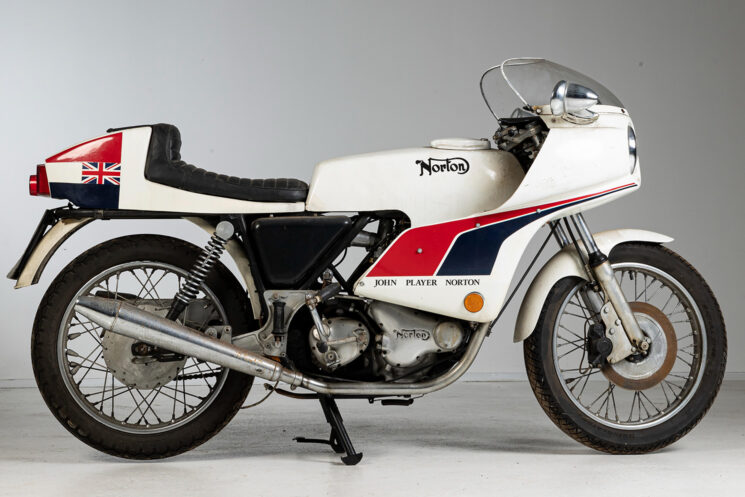
The JPN wasn’t just any ol’ Commando—it became a top-shelf, limited-edition masterpiece, and, in our opinion, is the best-looking Commando ever made. Originally slated for 1,000 units, Norton only churned out about 200 JPNs, making them even more special.
Sold in an ‘as-is’ condition, this bike was stored in a collection for some time, which is probably where the white paint got its distinctive discoloration. The large Smiths speedometer shows a mere 6,907 miles of use, but being an old Commando, it means that the new owner will have a bit of work to do before hitting the road. [More]

1975 Honda TL125 The Honda TL125 is a legendary trials motorcycle that Honda designed in collaboration with Sammy Miller—a multiple trials champion and off-road guru. The slim softly sprung single gained popularity for its lightweight design, agility, and exceptional performance in off-road trials competitions.
Trials riding is not for the faint-hearted, requiring riders to throw themselves and their motorcycles into increasingly difficult obstacles. Rather than overall power, lightness, suspension, and agility are the name of the game. And that’s exactly what Honda had in mind with the TL125.

Lighter than a willie wagtail on a diet, it featured ergonomic adjustments specifically created for trials riding. Riders could put plenty of force into the tall bars, and shift their weight back and forward with ease thanks to the low, skinny fuel tank. The narrow frame put the rider’s legs closer together, and the low seat was so small that it all but encouraged you to spend more time standing on the pegs for better control.
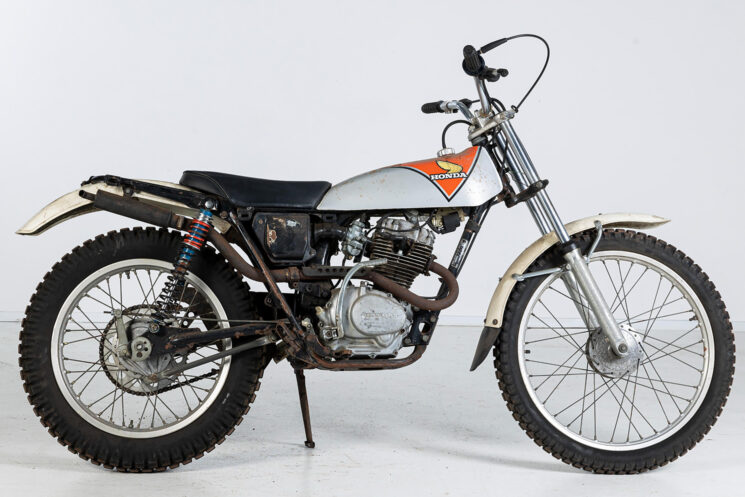
The Honda TL125’s long-travel suspension soaked up the bumps, as did the tubular steel cradle frame. The 125 cc four-stroke engine didn’t exactly have earth-shattering power, but it delivered what power it had smoothly, and the torque from down low was predictable and useable.
This particular TL125 has been in storage for the last 30 years, and nothing is known about its history before that. But the best part is that it should qualify for the vintage class at most trials competitions. [More]
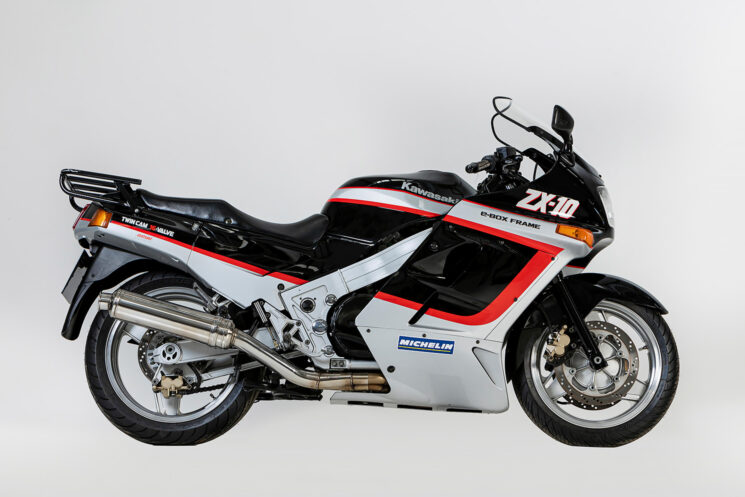
1989 Kawasaki ZX-10 After the huge success of the original Kawasaki Ninja, the Japanese firm came up with the ZX-10 as a follow-up act. Produced for just a few years (from 1988 until 1990), it had a top speed of 165 miles per hour, which made it the fastest production motorcycle when it came out.
It was the flagship sportbike for Kawasaki at the time and featured (for the first time in Kawasaki’s history) an aluminum perimeter frame. The 997 cc 16-valve DOHC inline-four was liquid-cooled, fed by 36 mm semi-downdraft CV carbs, and pumped out 135 muscular horses.
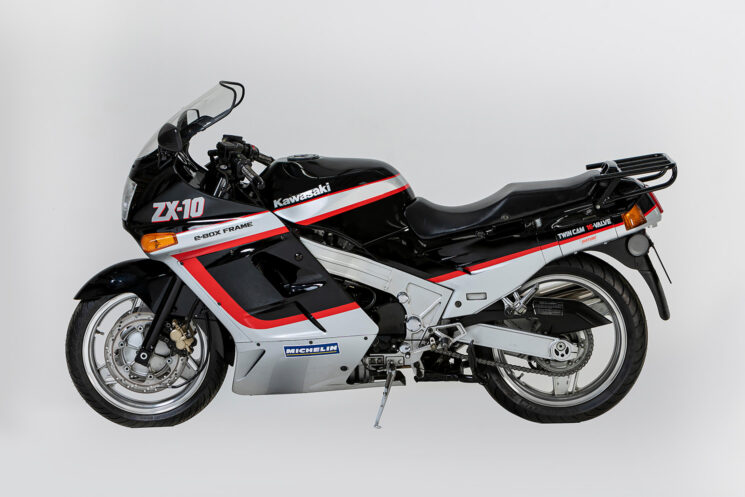
It was long and completely covered in plastic fairings, with very little mechanical componentry on display. The large square headlight, cast wheels, and flashy paint job scream 90s cool. We don’t remember the ZX-10 looking this good ten years ago (evidently, time has done strange things to us).
This Kawasaki ZX-10 is presented in stunning original condition and has lived a very pampered life. That said, it has been well enjoyed too, as evidenced by the 19,827 miles on the odometer. Those are the kind of numbers we like to see on a classic sport bike—high enough that it hasn’t been babied, but low enough that it has a whole lifetime of enjoyment left in it. [More]
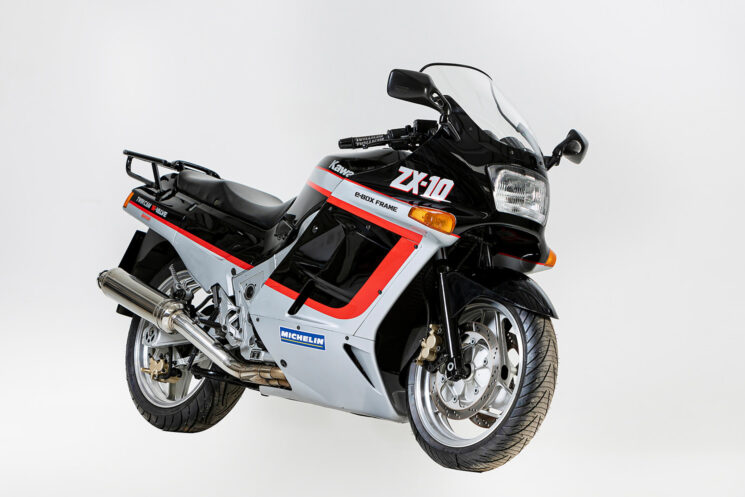
from Bike EXIF https://ift.tt/SYOXl7s
No comments:
Post a Comment